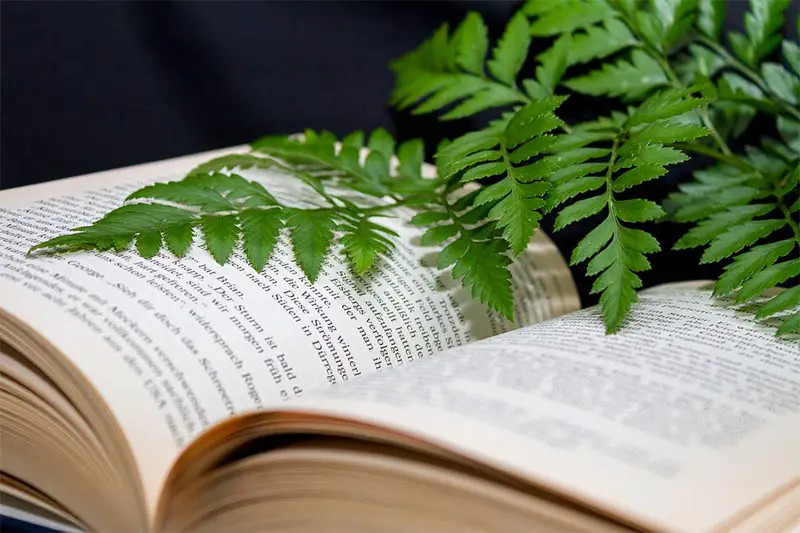Selecting Your First Bonsai Book
If you’re new to the art of bonsai, the one thing that will probably make the most difference to your future success is having an excellent bonsai book to refer to when you don’t know what to do next.
In this article, you will find some tips on how to identify the best bonsai books, as well as a few recent titles we think will be valuable to bonsai beginners.

How to Identify Quality Books
When evaluating non-fiction or reference books on any topic (including bonsai), there are several things you might want to take into account.
Popular Opinion
Obviously, you need to make up your own mind about what you want – but checking what other people think about different bonsai books can be a good place to start. If you see that a majority of people seem to recommend a specific book, there’s a good chance that you will like it too.
Level
If you’re a bonsai beginner, you need a beginner’s book. No matter how highly a certain book is recommended, or how popular it is, if it’s pitched at readers with a higher level of expertise than you have, it will not be helpful. Relatedly, your book needs to display a high level of clarity.
It’s not enough for the author of your book to be a bonsai expert, if s/he is not good at communicating his/her expertise. Look for a book written in nice plain language, with a minimum of jargon or confusing terms.
Localization
While there are some facts about bonsais that hold true anywhere in the world, you’ll often find that the best way to care for your bonsai will differ depending where you are. The location where the author lives or works influences things like whether the book uses imperial or metric units of measurement, and whether the species it mentions will thrive in your environment, which are important considerations.
In some cases, applying tips on bonsai care in a different environment from that intended by the author will not only not help your bonsai thrive, but might even cause it to die.
Note: if a bonsai book was written for another geographical location, and not your own location, that doesn’t necessarily mean that nothing in the book will help you. Just remember to take localization into account, and use your judgment when applying the tips to your environment.
Layout
If you’re a bonsai beginner, chances are you may not even know that you are looking for information about a certain aspect of bonsai art until you find that information, and suddenly realize that was what you needed to know all along. Therefore, the way your first bonsai book is organized and laid out is important.
You want something with both a detailed table of contents (so you know which sections to read before undertaking which bonsai task), and a comprehensive index (in case you need to search for specific information).
Some great books, written by great experts, read more like novels than textbooks, with few markers to indicate what information can be found where – but that is not what you, as a bonsai beginner, need at this point.
Illustrations
Photos are particularly important in a book aimed at beginners. If you just read a description of how your bonsai should look, or what signs indicate good or bad health in a bonsai, for instance, you might end up with completely the wrong picture in your mind. You need an actual picture, in addition to the description.
How-to Guides
Diagrams are also essential for any book that is trying to provide you with step-by-step instructions about caring for your bonsai. Again, a general paragraph about a certain procedure might be ok for a book aimed at bonsai experts, but for a beginner’s book, step-by-step instructions are essential. Look for a book that has lists of steps to follow, complete with illustrations.
We have a detailed bonsai tree care guide with all the relevant information. Check the guide out here!

Comprehensiveness
For your first bonsai book, it’s probably a good idea to buy an encyclopedia – or at least a very general, comprehensive book. As you become more proficient, you can look for more specialized books as you need them; but for starting out, you need a book that has all the information you may need.

Some Specific Books
We have tried to take all these factors into account when coming up with this list of top bonsai books for beginners – available in eBook format, as well as hard- and softcover, and in a range of prices.
Here is a really great book for those who want to learn not only the practical skill of caring for bonsais, but also some of the culture that goes along with this ancient art. Yukio Hirose owns a bonsai garden in Japan, and is one of Japan’s foremost bonsai artists and teachers.
He wrote this handbook only after many years of practicing this art, as well as imparting his knowledge to his students. This kind of Japanese teacher traditionally teaches more by example than with mere words; and this book, with more than 1000 photos, exemplifies the same teaching approach.
The contents page of this book is a perfect example of what I said about Layout (above): the book is broken down into many sections and subsections, with the page numbers specified, so it’s easy to find what you’re looking for.
It also contains many excellent illustrations, and its how-to guides literally show you how to do every step of every process: they don’t assume that you’ll have any bonsai knowledge at all when you first read this book.
The Complete Book of Bonsai: A Practical Guide to Its Art and Cultivation
(Harry Tomlinson, 1990)
The author of this bonsai classic, Harry Tomlinson, is one of the foremost bonsai artists and instructors in Europe, who has exhibited his own bonsais around the world and has also judged bonsai in many countries.
The book starts with some background on the origins and history of bonsai, and the conceptual principles underlying it. Both the photos and the drawings in this book are exquisite, and they are presented in a clear and easy-to-follow format.
You will find comprehensive step-by-step instructions on every aspect of caring for your bonsai, from creating your bonsai from seedling or cutting, to training and shaping it. The species guide is also great, with more than 100 species getting a mention.
The Complete Practical Encyclopedia of Bonsai: The Essential Step By Step Guide To Creating, Growing And Displaying Bonsai With Over 800 Photographs
(Ken Norman, 2013)
Ken Norman and his wife have been winning medals for years at UK flower shows for their stunning bonsai collection. He has been growing bonsais for nearly 50 years, and has chaired two major British bonsai societies.
This book begins with an account of the ancient art of bonsai in Japanese culture; it goes on to explain why certain trees and shrubs work better as bonsais than others, as well as the important principles of size and proportion necessary to achieve the best result. There is also plenty of advice on how to display your bonsai to its best advantage, with useful tips on containers and accessories.
There is a section on growing seasonal bonsai, a species guide, a chapter about different aspects of bonsai care, and a section on getting rid of pests and diseases. Roy Lancaster, OBE, describes this encyclopedia as “A masterly account for beginner and expert alike written with enthusiasm and authority”.
Bonsai Survival Manual: Tree-by-Tree Guide to Buying, Maintaining, and Problem Solving
(Colin Lewis, 1996)
Colin Lewis is a British bonsai artist, now living in the USA. He is passionate about the imagination and creativity that can be expressed through the art of bonsai.
In this guide you’ll find everything you need to know about designing, growing, and maintaining the perfect bonsai. Colin Lewis shares his expertise on all the important steps in your bonsai journey, from selecting the right species to step-by-step bonsai care. As the title suggests, this ‘survival manual’ also has plenty of invaluable troubleshooting tips to get you back on track when something goes wrong with your bonsai.
Although there is nothing like the heft of a nice fat physical book in your hands, or the smell of newly-printed ink on paper, in this day and age, we are becoming more and more accustomed to the convenience of ebooks. (For the diehards, a softcover version of the eBook is also available.)
This beginners’ guide features step-by-step instructions (complete with diagrams) on all aspects of bonsai care and training techniques, tailored to a range of common tree species – as well as some interesting background on bonsai lore.
Its contents page is not very detailed, but at least the headings do let you know exactly what you will find in each section you come across.
Bonsai Basics: A Step-by-Step Guide to Growing, Training & General Care
(Christian Pessey & Rémy Samson, 1993)
Here is another excellent, simple guide for bonsai beginners. Its coverage of bonsai care and training is simple and easy to understand, and it covers a full range of topics likely to be useful to bonsai beginners. It has everything, from selecting the right tree species to fertilizing and repotting, to styling, pruning, wiring your bonsai.
A really nifty feature of this book is its calendar, complete with a seasonal checklist, to remind you what you need to do for your bonsai during the year, and when the best time is for doing it. But remember, the bonsai experts who wrote this book are from France – so you may need to customize the calendar to your own region before applying the tips.

Final Thoughts
Although this article is all about which bonsai book to select, and how to select it, please remember that there is almost no such thing as the wrong book. All books are all wonderful. If you find that a certain book is interesting, or informative, or useful, or enjoyable, then, by definition, that is ‘the right’ book for you!













